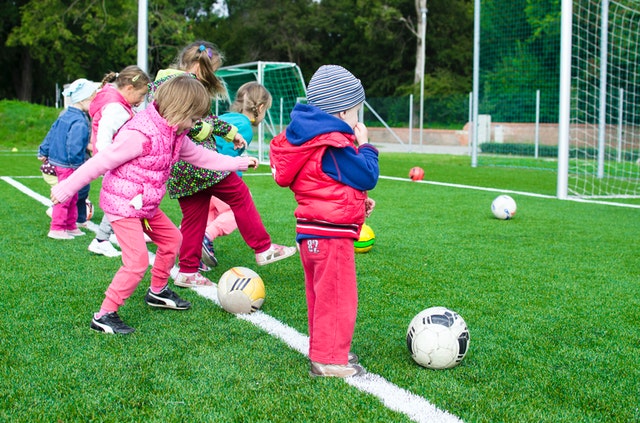
No matter what, everyone needs to talk about family.
ESL students need to have the vocabulary and background to talk about their families as well. Use the activities below to have them chatting all about their relatives in no time!

Chat about Relatives Using These Fresh Activities
-
1
Climbing the Family Tree
Introducing the vocabulary to talk about family is the most important. When teaching about family, it is easiest to teach it with a family tree. You will need a large family tree, illustrating mother, father, sisters, brothers, grandparents, children, grandchildren, aunts, uncles and cousins. Each branch should have a picture and the title of the person clearly written. You will need to go over the family tree slowly and clearly, reviewing as you go along to make sure the students are picking up the pronunciation and meaning of the words.
-
2
Cut to the Chase
To reinforce the family vocabulary, start with a review of the family tree. After that, introduce a cut and paste activity. You will need to make a worksheet that is a smaller version of the family tree you presented in the last activity with the pictures in it, but leave the titles blank. Put all the titles on a separate page. Have the students cut out the titles and place them in the correct positions. Have students volunteer to read the titles to review pronunciation of the family words.
-
3
What’s in a Name?
This activity will help your students to learn the many different titles there are in English for various family members. For example, a grandmother can be called:
- Grandma
- Grandmother
- Nana
- Grammy
-
Your lists will vary depending on where you live. Start by explaining that there are many names that various family members go by in English. Make several columns: one each for mother, father, grandmother, grandfather and any other title you are going to include. Show students the alternate titles on cards, and have them guess in which column they should go, correcting them as necessary. Discuss as you go. Then take cards down, and have students place the cards in the correct columns on their own.
-
4
It’s All in the Family
Your students will want to know the vocabulary to talk about their extended family as well. Titles such as stepmother and father-in-law are necessary for everyday conversation. Present this vocabulary with your family tree again. You can show them the relationships on the tree and label them as such. Afterwards, take off the titles and have students try to put them in the right spots. This could also be a great time to review the original family tree vocabulary.
-
5
How Can You Compare?
The topic of family can be a good time to introduce comparisons. Statements like, “My brother is older than me,” or “My grandmother is shorter than my cousin,” are good examples of this. Have various pictures of families available, and have students come up with similar statements. If necessary, teach the word “than” before starting this activity as well. For a more advanced class, you may want to have students come up with statements that may or may not be true of the pictures, and then the others will need to decide if it is true or false.
-

-
6
Go Fish
Another way to reinforce the titles of family members is to play Go Fish with family cards. You will need to make these cards. Make a blank grid about the size of playing cards. Take the titles and pictures from your original family tree (add the extended members if possible—if you think that is too advanced for your class, just take them out as necessary), and put one on each “card” on your grid. Now make two copies of this for each deck of cards you want to make. Do this on card stock and/or laminate them if possible to make them more like playing cards. The rules for Go Fish can easily be found by doing an internet search.
-
7
Family Feud
Choose ten people (or a more appropriate number for you, depending on your class size) to participate. Divide them into two groups of five. Have them each name their team. You will need to have questions prepared where the answers are the vocabulary terms from the family tree, and a bell or some type of noisemakers for each team. For each question, one member from each team comes up to you. You ask the question, and the first one to ring their bell gets to answer. If that person is right, his team gets the point. If he is wrong, the opposing member gets a chance to answer it. The first team to get ten points wins. This game can become competitive and is fun for the students.
-
8
Last One Standing
Stand with the class in a circle. You will need a large ball to play this game. Begin by saying the title of a family member and throwing the ball to a student. As soon as he catches it, that student must say a different title of a family member, and then immediately throw the ball to another student. That student in turn must throw to another who gives yet another family member title. This continues until a student catches the ball and cannot immediately think of a family member title, and that student is then “out.” He must leave the circle. This continues at a rapid pace until there is just one student left. That student is the winner. Students of all ages enjoy this fast-paced game.
-

-
9
Hot Seat
In this game, one student sits in a chair facing the board, and another sits in a chair directly behind him. The rest watch until it is their turn. You show the first student the picture and title of a family member, and that student must describe the family member to the second student without actually naming the title. If the first student accidentally names the title, he is out, and another student from the class sits there and describes. When the student with his back to the class guesses the title, he gets to face the board in the hot seat, and another student is chosen to be the one who guesses. This game is a lot of fun, and allows students to use their language skills from previous lessons when giving a description.
-
q
Family Reunion
This activity is for students who are able to ask simple questions of each other. The classroom should be set up like a party, with items labeled (such as pretzels) that have not yet been covered in class. Each student should be assigned a family member and wear that title on his back. The students will talk to each other, trying to figure out what name is on their back from the questions they ask one another. For example, “Do I have grandchildren?” If the answer is yes, they are either a grandmother or a grandfather. Once they have guessed their title, they can move it to their front so everyone knows that they know who they are. When everyone has guessed their family member, the students should interact at the reunion in character. This is a fun activity which can be a culmination to the topic of family.
Learning about family is very important for an ESL student.
They will need to talk about it every day for a variety of reasons. The above activities will help your students to be able to say what they need to say about their families in everyday conversation.
P.S. If you enjoyed this article, please help spread it by clicking one of those sharing buttons below. And if you are interested in more, you should follow our Facebook page where we share more about creative, non-boring ways to teach English.







